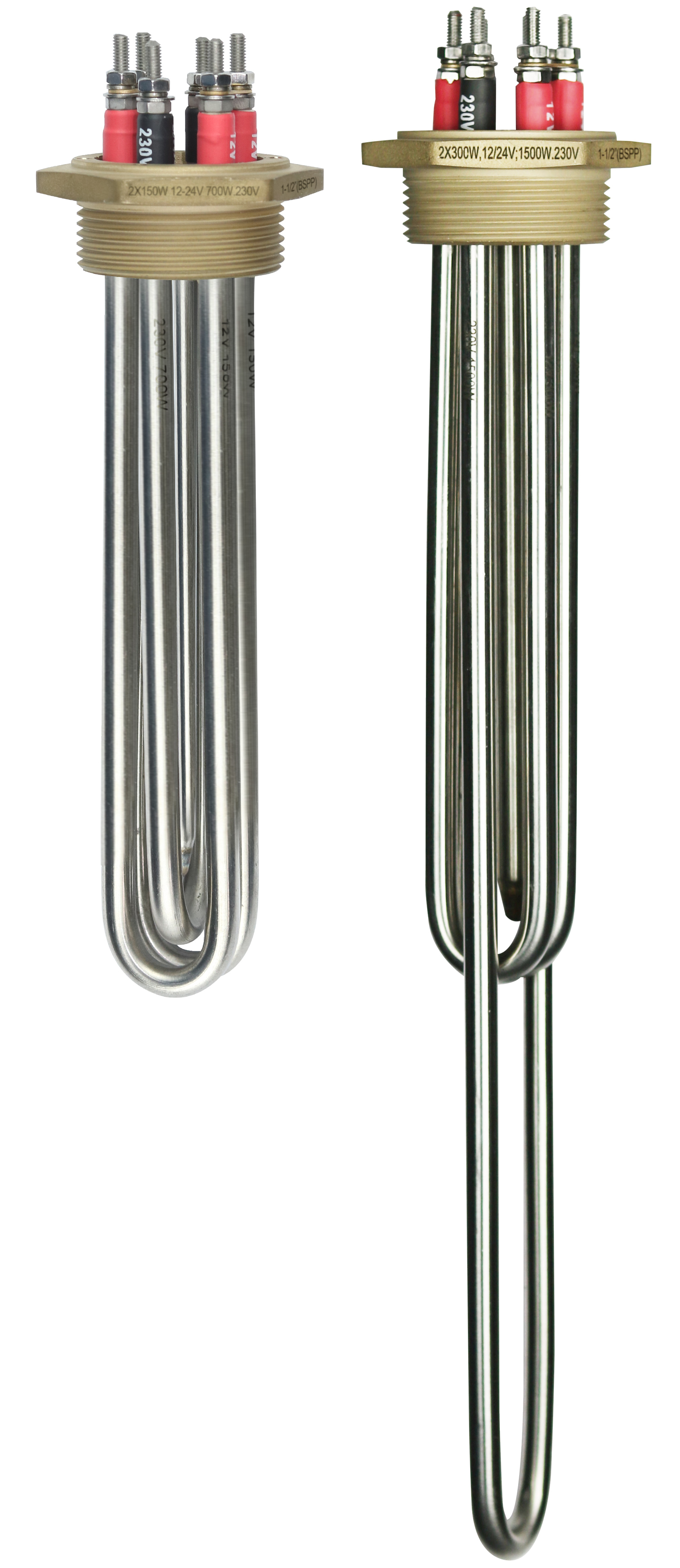

- Air and Fluid heating solutions
- Renewable energy
- Industry
- Agriculture and Farming
Main application: direct use of low voltage electricity produced by wind turbines or photovoltaic solar panels, for heating liquids, domestic hot water circuits, hot water tanks. These immersion heaters make it possible to use the surplus energy produced, and not used by domestic lighting needs or small electrical appliances. They can also be used in addition to domestic hot water tanks, limiting the need for electricity from the distribution network.
Heater tube material: dia. 8mm heating elements in AISI 304 (AISI 316; AISI 321; Incolloy 800 or Incolloy 840 on request).
Fitting material: Brass, brazed on tubes. Supplied with one fiber gasket but without nut. See accessories below.
Thread: 1"1/2 BSPP (ISO 228) and metric thread M45x2
Thermowell: Includes one stainless steel thermowell 7mm ID.
Heating elements connections: Terminals with M4 stainless steel screw, nut and stainless steel washer. Supplied with brass straps for switching the two low voltage heaters from 12V to 24V. (Changing their connection from parallel to serial).
Low voltage heating elements are identified by a red sleeve. 230V heating elements are identified by a black sleeve. Not heating immersed zone: 50mm.
Surface load: see drawings
Voltage: 12 or 24V DC or AC and single phase 230V for models with auxiliary power heater
Attention: Switching by a thermostatic device the heating elements in low voltage must be made by device designed for low voltage use, and withstanding the important intensity of these circuits. Similarly, the section of the power cables must be adapted.

